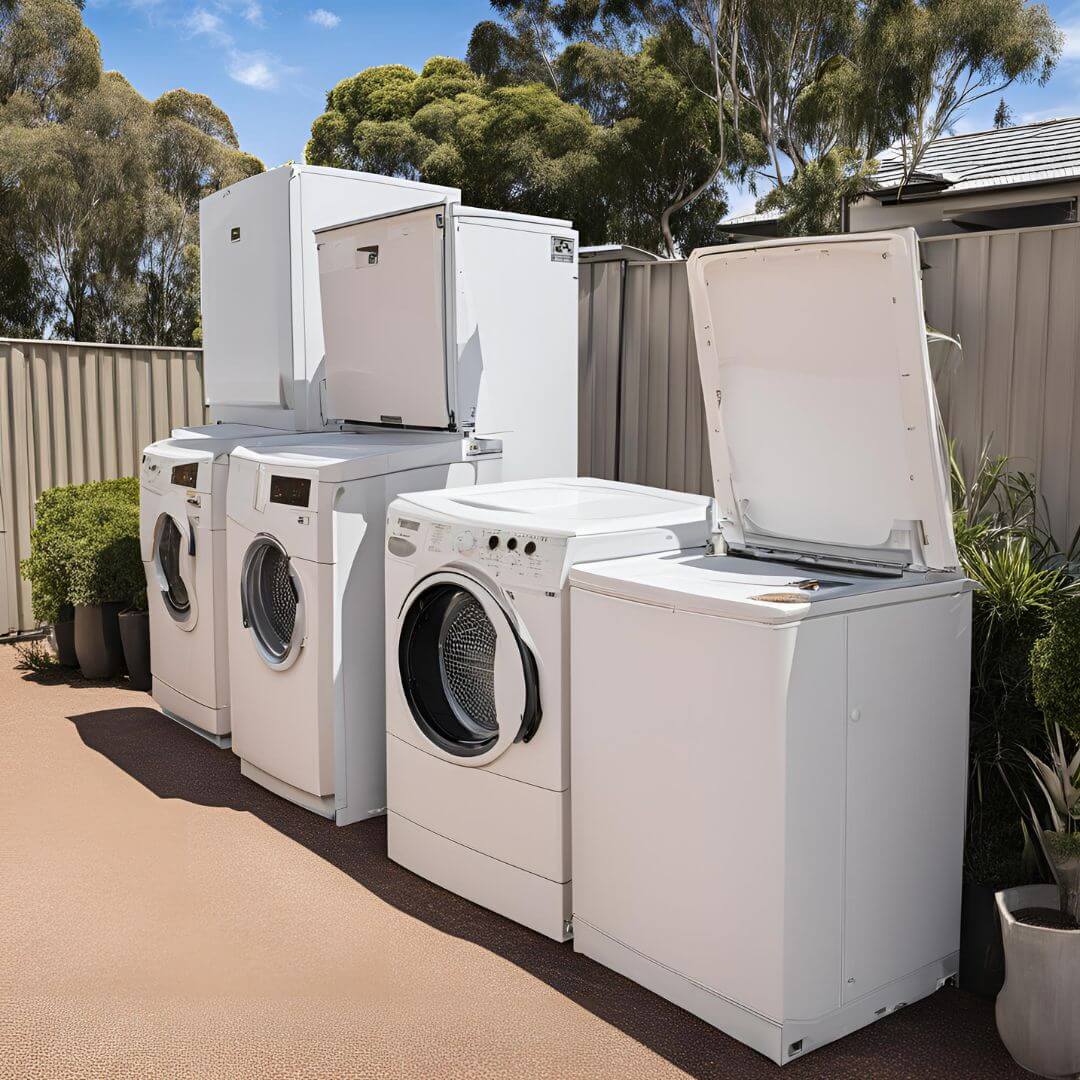Proper white goods disposal ensures that unnecessary harm is not caused to the surrounding environment or human health. Disposing of anything through the appropriate channels also helps to promote a more eco-friendly and efficient world.
White goods form a significant part of the total waste disposed of each year. There are more than 45 million household appliances in Australia alone. Proper disposal helps to ensure that they do not cause unnecessary harm to human health or the environment.
But what are these techniques? This blog provides insights to both businesses and households about how the white goods disposal system in Australia works. Although its focus will be on Australia, many of these insights are applicable to global waste management systems.
What are White Goods?
White goods refer to large electronic goods usually used for domestic purposes. They are called white because they are usually white in colour. Common examples of white goods include a refrigerator, cooker, microwave oven, clothes dryer, washing machine, and a freezer.
Many of these electronic items are large and bulky. Additionally, unlike other electronic products like cell phones, white goods usually last a very long time. Many people see buying their large household appliances in the same vein as buying a car.
Because of their bulkiness and their size, many white goods end up in municipal landfills and dumpsites. However, there are other disposal methods that can deal with white goods.
The Importance of Proper White Goods Disposal
Proper white good disposal techniques ensure that the safe and efficient waste disposal systems are utilised. Following them protects both human health and the environment. It also helps to promote practices like recycling.
Many white goods contain components that have a negative impact on the environment when disposed of in landfills. Refrigerators, for example, contain refrigerants. These can leak into the surrounding soil or water.
Washing machines and dishwashers may also contain toxic substances such as lead and mercury in their wiring and electronic components.
If these appliances are not properly disposed of, harmful chemicals can contaminate the soil and waterways, causing significant environmental damage.
Improper disposal can lead to more waste in landfills. White goods take up a lot of space and can take years to decompose. Recycling these items allows us to recover valuable materials, reduce the need for new raw materials, and save energy.
Many components of white goods, such as metals and plastics, can be recycled and reused to create new products, promoting a circular economy.
Disposal Options for Common Household Appliances
Common white goods like washing machines, air conditioners, and refrigerators both require certain specialised disposal techniques and represent the most common ways to get rid of old appliances.
Washing Machines Disposal
Washing machine disposal often involves the breakdown of the machine into its various components. This helps to recover and recycle any valuable materials that might have been used during the construction process. The benefit is that these same goods can be reused, thereby promoting recycling.
Air Conditioners Disposal
Air conditioners are a common office item. They are relatively complex systems that require both removal and safe disposal. Like washing machines, the breakdown process helps with the extraction of valuable materials so that they can be recycled for later use.
Refrigerators Disposal
Refrigerator disposal helps to save the excess use of heavy metals that are common in the production process. Recovering these metals from an old appliance helps to ensure that unnecessary mining and mineral production does not occur.
White Good Disposal Services
Waste management companies are capable of providing a variety of white good disposal services. Most of these derive from their usual waste disposal capabilities that they have developed over their years of experience.
When looking at where to safely dispose of your white good products, be sure to speak to a dedicated waste management company like Cleanway. They will be able to advise on the most appropriate waste stream.
Cleanway
Cleanway is an EPA licensed waste management company. They are based throughout Australia and are capable of providing advice on your white good waste disposal needs.
Municipal Recycling Centres
Municipal recycling centres are an effective way to manage various forms of old household appliances. Disposing at local council sites also ensures that the appropriate waste techniques are followed.
Take Back Programs
Take back schemes can be run by white goods providers like department stores. Some companies take back old appliances in order to ensure safe disposal of white goods and a hassle free system for their clients.
Donations
Sometimes old appliances do not need to end up as landfill waste. Things like old home entertainment systems might be valueless to one person, but could change the life of another who cannot afford it. Unwanted white goods can find new value in different homes.
The Future of White Good Disposal
White goods disposal options will likely increase in the future as more waste removal methods come into existence. Additionally newer major appliances will likely come onto the market to replace old appliances.
Additionally, the use of hazardous materials tends to decrease as technology increases. Once common hazardous substances like those found in microwave ovens and other older appliances are no longer present.

